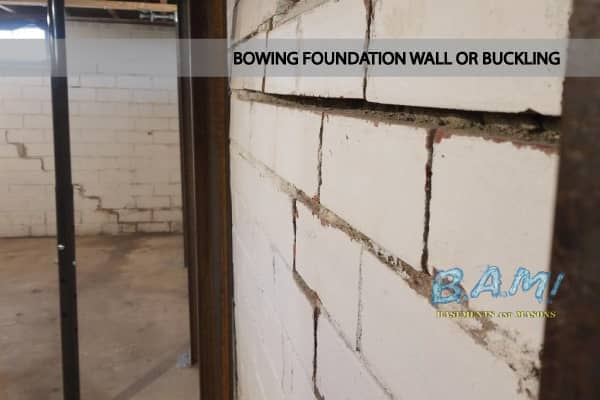Best Basement Waterproofing - An Overview
Best Basement Waterproofing - An Overview
Blog Article
The Buzz on Best Basement Waterproofing
Table of ContentsBest Basement Waterproofing Things To Know Before You BuyThe smart Trick of Best Basement Waterproofing That Nobody is DiscussingWhat Does Best Basement Waterproofing Mean?Fascination About Best Basement WaterproofingNot known Facts About Best Basement Waterproofing
usages excavation techniques toward the base of the framework's structure. involves eliminating dampness after it has actually gotten in the cellar. AdvantaClean's trained experts and technicians will find the water source. If wall surface or piece splits are existing, we will certainly infuse polyurethane and epoxies right into the cracks and seal the compromise, stopping more dampness from getting in.If there's condensation on the outside of the aluminum foil, you have high moisture in your cellar. Fix it with a portable space dehumidifier or a whole-house humidifier system rather than waterproofing products. If the aluminum foil has condensation on the within surface (next to the wall), the dirt around your home might be naturally damp from a high water table or poor soil drainage.
You can waterproof simply your interior wall surfaces, which might fix the problem. Or you can waterproof your exterior wall surfaces, which is a better wager yet more pricey. Here's the scoop on the various types: These thick layers are cement-like. Once they dry, they stick permanently to concrete and masonry wall surfaces (Best Basement Waterproofing).
Best Basement Waterproofing - Questions
Swirl the brush at the final stage of application to give the wall an eye-catching, ended up appearance. Concrete water-proof coverings can't be put on previously painted surfaces; check the label. A 5-gallon bucket costs concerning $60. Also referred to as densifiers, they are suitable only for wall surfaces that have not been painted or sealed.
You comb, roll, or spray it on a lot more thickly one gallon covers simply 75 square feet, not the 300 square feet regular with typical paint. Water-proof paint is great for DIY application. You can use it over repainted surfaces, and paint over it once it's healed (one gallon prices $37).
It can set you back $10,000 to $15,000, depending on the work required. Outside waterproofing involves digging deep into all around the house to the complete deepness of the foundation wall surfaces, then mounting a waterproof covering or membrane topped by water drainage panels.
We have actually all been captured in a storm without any umbrella or raincoat (Best Basement Waterproofing). And it's constantly a recipe for catastrophe: whatever's damp, your hairdo is wrecked, and things are obtaining musty. A basement without waterproofing is sort of like that. Minus the destroyed coiffure part. Your basement doesn't wish to go through a downpour without correct defense just as long as you do not desire to.
About Best Basement Waterproofing
Yet if you have actually done your read review study, you would certainly recognize there are 2 kinds of waterproofing: exterior and interior. It can obtain perplexing what they both mean, which one's a far better financial investment, and what will in fact maintain the water out. Don't worry, we assembled this blog site to easily define both approaches for you and review the pros and cons of each.
Exterior waterproofing is a waterproofing approach that entails sealing your home from the outside. The structure walls are after that cleaned up, sealed, and covered with a waterproof membrane layer or sealant.

4 Simple Techniques For Best Basement Waterproofing
It's a much more engaged procedure that needs digging up your backyard, which is pricey site and time-consuming. Exterior waterproofing includes getting rid of everything surrounding your house, consisting of porches, driveways, pathways, landscape design, air conditioner units, decks, and more. If any one of the job was done incorrectly and water is still entering your basement, there isn't much you can do to fix or fix it.
Interior basement waterproofing involves waterproofing from the within. Any kind of water that leakages right into your cellar is redirected before it touches your floor.
It's an effective technique to water-proof your cellar - Best Basement Waterproofing. The disadvantage of indoor cellar waterproofing mostly pertains to the installment procedure. This approach requires stored items, furniture, and built-in shelving or cupboards to be moved from touching the basement walls. And during setup, your basement can't be made use of. The biggest difference between the two methods is this: Exterior waterproofing is a preventative solution and interior waterproofing is a corrective service.
Best Basement Waterproofing Fundamentals Explained
To conclude, outside and interior cellar waterproofing are both efficient techniques of protecting your home this link from water damages. Exterior waterproofing develops an obstacle that avoids water from entering your home, while indoor waterproofing redirects water that does enter your home. And it is necessary to keep in mind that exterior waterproofing is a pricey and disruptive setup process when contrasted to interior waterproofing.
Whichever method you choose, make certain you pick a reputable and reliable service provider for the job. If you have any inquiries about basement waterproofing, please reach out to us.
You can submit our kind here, start a conversation in the lower right-hand corner, or call us at 1-800-827-0702.
Report this page